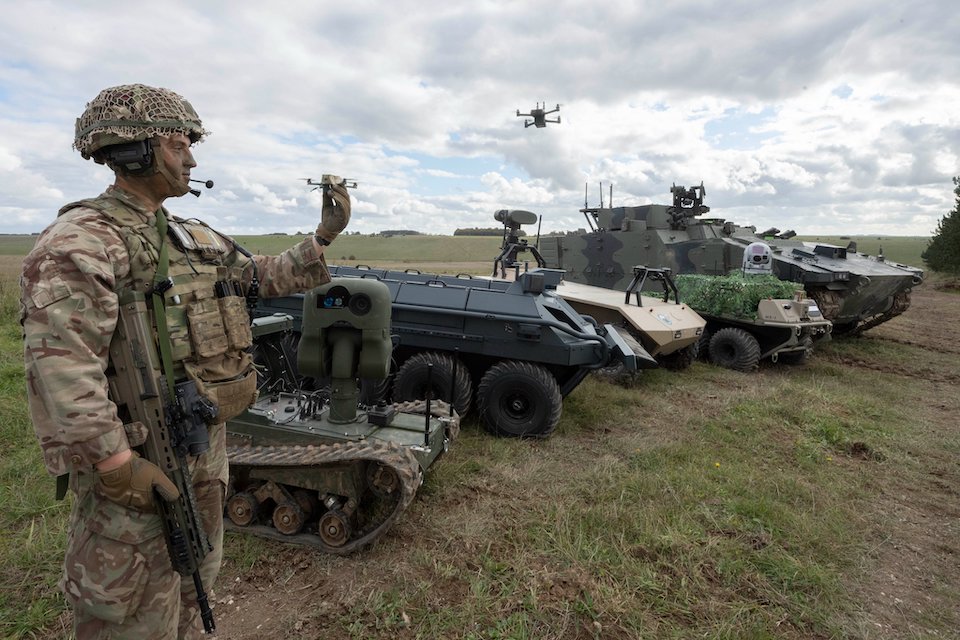Ministry signs contract with specialist firm to provide an application for engineers to probe data
The Wildcat HMA2 will be among the craft analysed by the anomaly detection tool Credit: Crown Copyright/Open Government Licence
The Royal Navy is progressing its use of algorithms and analytics to spot potential engineering issues with its fleet of Wildcat helicopters.
Newly published commercial documents reveal that the Ministry of Defence has signed a one-year deal with a specialist firm that will support the development of an “anomaly detection analysis and reporting tool”.
The contract reveals that, as part of the Navy’s Programme Nelson tech transformation scheme, an algorithm was developed in 2019 to detect anomalies in the functioning of helicopter components such as “gearboxes, drive train, engines and rotor systems”.
This algorithm is fed by information from a monitoring system that collects data from on-craft vibration sensors. These “raw vibration signals generate condition indicators which are indicative of the health of” helicopter systems – including “information relating to component wear and damage”.
The monitoring platform identifies instances where vibrations exceed a stipulated threshold, potentially indicating attrition or damage. These can then by further investigated by engineers.
Wildcats – which in 2015 began to replace the Navy’s previous generation Lyn attack helicopters – are equipped to provide engineers with 400 individual condition indicators (CI), which the contract says “makes manual analysis and aircraft monitoring highly challenging, especially on a fleetwide basis”.
Related content
- Royal Navy seeks digital and IT chief to lead transformation
- Navy seeks £3m-a-year support partner for Top Secret IT operations
- MoD awards £15m deals for support with Navy transformation scheme
“While existing automated alerts can be highly effective in detecting certain fault conditions, this approach can be less effective at alerting for other subtle, rapidly progressing faults. This is where the complementary approach of anomaly detection is beneficial,” it adds. “Through the use of an anomaly detection algorithm, which compares the behaviour of each individual CI for the component, rapidly developing fault conditions may be identified before component failure and before an exceedance alert is triggered. This project seeks to procure an automated CI data analysis capability using anomaly detection, which will help identify early onset of component damage. This would enable informed monitoring and fault-management using other established methods such as wear debris analysis and lubricating oil analysis.”
The algorithm developed by the Navy in 2019 “was proven to have success”, the contract says. The intention now is to take this tool and “develop and incorporate it into a software application that is useable by frontline aircraft engineers”.
This work will be delivered by Tonic Analytics, a software firm specialised in big data and predictive analytics. The company signed a 12-month contract with the MoD on 1 October; the deal will be worth £45,000 to the Southampton-based company.
The firm will be tasked with taking the Python-based code of the anomaly detector created by Programme Nelson and refining and improving its functionality.
“The coding should then be incorporated into a Windows or web application-compatible solution with an appropriate graphical user interface,” the contract says.
Throughout the process, work should be informed by input from the 1,710 Naval Air Squadron engineers that will use the software, the document adds.
The ultimate goal is that the automated means of flagging potential anomalies “will aid and prioritise deeper analysis” by both monitoring software and engineering personnel.
The application should initially work with HMA2 and AH2 models, “with future capability for additional airframe types to be incorporated” in due course.
The MoD will retain all intellectual property rights for the software.




https://madreviewer.tistory.com/category/정보?page=3
벼룩시장 신문그대로보기 (구인구직, 부동산) 벼룩시장 신문그대로보기 바로가기 그리고 지역별 벼룩시장 종이신문그대로보기 방법 (구인구직, 부동산) 알아볼게요. 교차로신문 같이 벼룩시장은 지역별 일자리, 구인구직, 부동산 등 다양한 정보를 제공해요. 교차로신문그대로보기 바로가기는 아래에서 확인하고, 오늘은 벼룩시장 신문그대로보기 바로가기 그리고 사용법 섹스카지노사이트
https://pornmaster.fun/hd/zzhs
수원출장샵
벼룩시장 구인구직 및 신문 그대로 보기 (PC/모바일) | 구인구직 앱 어플 무료 설치 다운로드 | 모바일 벼룩시장 보는 방법 | 벼룩시장 부동산 | 지역별 벼룩시장 | 벼룩시장 종이신문 에 대해 알아보겠습니다. 섹스카지노사이트
Интересная статья, содержит много информации.
이태원스웨디시안마게이클럽
대전나이트클럽
충무로출장업소
전신스타킹
https://itgunza.com/299
https://itgunza.com/226
https://nicesongtoyou.com/today-fortune/horoscope-by-zodiac/
수원출장샵
전신스타킹
https://gorgopage.com/2024년-띠-무슨해-삼재띠-청룡띠-운세-공휴일-달력-한번/
https://madreviewer.tistory.com/tag/농협인터넷뱅킹
https://dnolife.net/software/scapture/
https://arlstory.com/albamon-gyeong-gi/
아름다운스웨디시업소
https://itgunza.com/762
양산시술출장마사지
https://kakaotaxi.dasgno.com/kakao-taxi2
https://madreviewer.tistory.com/tag/타블렛
https://www.ohgunstory.com/entry/EC97A0EAB28CEC9E84-EBB094EB9191-EC84A4ECB998ED9598EAB8B0-EBB0A9EBB295
https://k-studio.kr/bdsm-테스트-감쳐진-그-사람의-내면심리-2가지-성향/
전신스타킹
https://souhaya.tistory.com/2501
http://baekis.egloos.com/6551708
Dead written content, thanks for entropy.
https://download-install.com/entry/3DP-Chip-EB8BA4EC9AB4EBA19CEB939C-EB939CEB9DBCEC9DB4EBB284-EC9E90EB8F99EC9CBCEBA19C-EC9EA1EC9584ECA3BCEB8A94-ED9484EBA19CEAB7B8EB9EA8
https://dday.tistory.com/1165
https://download.beer/wp-content/uploads/2020/12/odin-image-8.jpg
https://infohelpforyou.com/tag/ec958cebb094ecb29ceab5ad-eb8c80eab5ac-ec9dbcec9e90eba6ac/
https://infohelpforyou.com/tag/eb8c80eab5ac-eab5acec9db8eab5aceca781/
https://madreviewer.tistory.com/tag/야생마
https://download-install.com/tag/브라우저20다운
https://mintfin.tistory.com/tag/채널A20홈페이지
https://mintfin.tistory.com/tag/천안교차로20부동산
https://blog.naver.com/kimo23k/223115447772
https://klero.tistory.com/tag/비트윈커플앱잠금설정
buying prescription drugs in mexico: Mexican Easy Pharm – mexican rx online
https://new-software.download/windows/nateon/
mexican mail order pharmacies https://mexicaneasypharm.com/# mexico drug stores pharmacies
reputable mexican pharmacies online
전신스타킹
충무로출장업소
거제출장안마